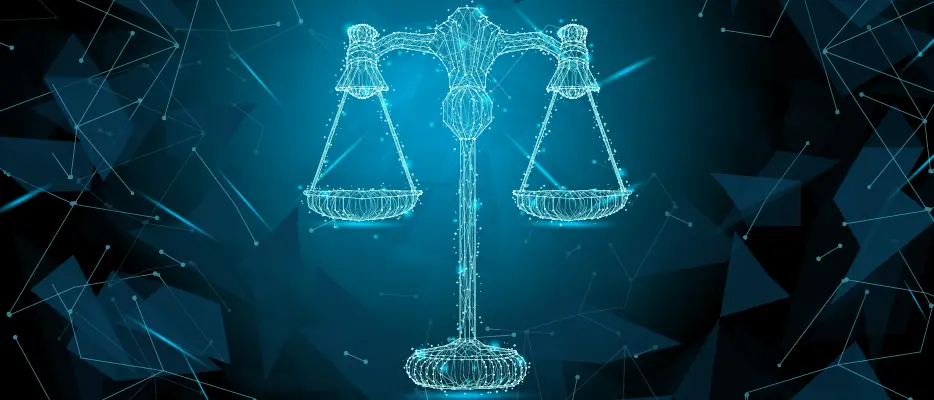In the constantly changing realm where artificial intelligence (AI) intersects with localization, legal oversight has become a focal point, revealing the complex interplay between technological advancement and regulatory supervision.
Dr. Arle Lommel, a distinguished figure in the discourse surrounding language technology at CSA Research, provides invaluable insights into the critical juncture the localization industry and language provision companies are currently facing. As governmental scrutiny of machine translation and AI reaches unprecedented levels, there are significant regulatory interventions. For example, the use of machine translation in the health industry is now subject to strict regulations. In the USA, where Federal funding is involved, machine translation must be accompanied by human post-editing services in medical contexts and more regulation may be expected as it relates to AI and localization.
Understanding the Basics
Before delving deeper, let’s define a few key terms:
- Machine Translation (MT): The use of software to translate text or speech from one language to another.
- Self-certification: A process by which a company verifies that its products meet all legal standards without the need for external checks.
With a keen eye on recent regulatory developments, particularly the landmark amendment to the US Code addressing machine translation (MT) usage within specific medical contexts, Dr. Lommel at CSA Research elucidates the trajectory of regulatory intervention of language services. While this initial amendment may seem narrowly targeted, it serves as a harbinger of broader regulatory trends that are poised to shape the future of AI deployment, casting a particularly significant shadow over the language sector.
The EU’s AI Act: A Balancing Act of Innovation and Control
At the epicenter of this evolving regulatory landscape lies the proposed AI Act within the European Union (EU), an ambitious legislative endeavor aimed at striking a delicate balance between fostering innovation and safeguarding fundamental rights. Despite its regional origins, the AI Act is poised to exert a substantial global influence, compelling multinational enterprises to align with its stringent provisions. Dr. Lommel emphasizes the pivotal role of the Act’s self-certification and policing mechanisms, underscoring a regulatory ethos characterized by a nuanced blend of oversight and industry autonomy.
Case Study: A Language Service Provider Adapts to the AI Act
Consider the scenario of a mid-sized language service provider (LSP) in Europe grappling with the AI Act’s new requirements. This LSP uses AI-driven translation tools to enhance productivity and accuracy. Under the AI Act, they must now conduct thorough risk assessments and apply for self-certification to demonstrate their tools’ compliance with safety standards. This process involves both an internal review and adjustments in their technology deployment strategies to ensure they meet the stringent criteria set out by the legislation.
The Wider Implications of the AI Act on the Language Sector
Dr. Lommel delves into three critical domains where AI applications, including MT, intersect with heightened regulatory scrutiny: employment dynamics, law enforcement and border management, and access to essential services. As AI permeates translation management systems and reshapes the contours of workforce dynamics, questions of risk assessment and liability come to the fore, necessitating a nuanced understanding of regulatory imperatives.
Furthermore, Dr. Lommel underscores the fluid and evolving nature of regulatory oversight, urging industry stakeholders to adopt a proactive stance in anticipation of an era characterized by uncertainty. While the language sector has traditionally operated on the periphery of regulatory scrutiny, the pendulum is now swinging, compelling organizations to proactively anticipate and adapt to the evolving legal landscape. As calls for AI regulation crescendo, complacency becomes a luxury that the industry can ill afford.
Looking Ahead: The Future of AI and Localization
As we look towards the future, the regulatory landscape is likely to continue evolving, with potential new rules and technologies emerging. Stakeholders must stay informed and agile, ready to adapt to new challenges and opportunities in a landscape where AI and localization not only thrive but also serve as bastions of legal certainty and ethical integrity.
Dr. Arle Lommel’s astute observations serve as a clarion call for the language industry to navigate the intricate tapestry of regulatory terrain with vigilance and foresight. By embracing a proactive approach to compliance and innovation, stakeholders can chart a course towards a future where AI and localization not only thrive but also exemplify the highest standards of legal and ethical integrity.
The journey ahead is undoubtedly challenging, but it is through proactive engagement and a commitment to ethical excellence that the language industry can continue to lead the way in harnessing the transformative power of AI.


